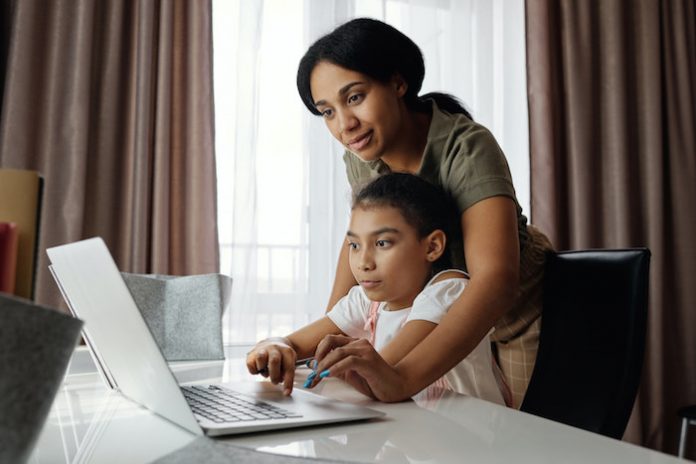The COVID-19 pandemic has been a learning experience for schools and businesses alike. Even as the world works toward some semblance of normalcy, there are opportunities to learn from both areas and adjust the path moving forward.
The coronavirus pandemic began as a forced, nationwide experiment for working from home and eLearning. It has now turned into our everyday reality.
We all experienced the patches businesses and schools put on during the spring. But now that we’re in it and have more time to prepare, we can take more charge of our own destiny.
Even if the world seems to be normalizing, the opportunity is to continue to grow for the moment and in advance of what uncertainties the future holds. Because no matter how it seems, the COVID-19 pandemic is progressing at its own pace, and the one thing we can say with confidence is that change will be the norm for the foreseeable future.
Respect the learning curve
To understand the mindset of educators and parents, I led a collaborative team that took this head-on to find the opportunity in the chaos to help us be better this fall. As part of this, we conducted a nationwide survey that yielded some eye-opening insights.
On the surface, the satisfaction scores from parents looked high. But by digging deeper, we found that those satisfaction scores were elevated by a “grace period” effect.
Parents certainly gave due credit to the school boards and teachers that stepped up to the plate at a moment’s notice. At home, the eLearning burden fell to parents. Three of four had little to no prior experience with eLearning, while most (88 percent) spent at least one to three hours assisting their students.
According to 96 percent of responding teachers, the learning quality in virtual settings suffered. Overnight, their job description required them to be digital content creators and IT specialists. Adapting lesson plans for eLearning required more tech training and individualization. And less than half of teachers felt they were managing their work/life balance very well.
Close the experience gap
The eLearning approach and the business world can learn from one another, especially those businesses that are home-based.
The problem with eLearning during the pandemic is that it’s as if online learning was viewed as a snow-day fill in. No one, it seems, was prepared to have to do it on a long-term basis. However, today it’s the norm, and we’re past the grace period.
Entrepreneurs and small businesses that regularly work from home were better acclimated to this shift. Our research identified three main gaps that needed to be closed to make public K-12 online learning successful:
- Levels and channels of communication between school and home need improvement
- Expectations of teachers, students and parents lacked alignment
- Learning quality was significantly lower in a virtual setting than in the traditional classroom
Once we obtained a deeper understanding of the eLearning gaps, the team turned its focus to driving change.
We developed Take-Action Kits that prepare parents, teachers, and administrators for conversations, meetings, and decisions they will have to face when trying to drive meaningful change in eLearning preparedness and process.
These include checklists and worksheets for school and home and focused on preparedness and process. And we challenged ourselves to think broader. If these challenges exist as it relates to education, where else can we apply our Take-Action approach?
Everything communicates
The common theme for successfully adapting in education and businesses alike centers around communication. And a full shift to being virtual forces you to do that faster and at a larger scale.
You have to realize the grace period is over.
If you started new processes and procedures due to COVID-19, it’s time to refine and optimize them or decide to stop them. Perhaps they aren’t critical or profitable to maintain beyond the stop-gap.
Businesses that survey their customers shouldn’t rely on satisfaction scores alone. They should talk to customers and employees. Learn more about their experience interacting with your business, and find out if they are just “putting up” with how things are, or if they are truly satisfied.
The golden rule of this approach is if you ask a question, be prepared to act.
Take the same approach internally.
How are you training your employees to be successful in their new remote environment now that things are more permanent? Do they need software help or help to set up a home office? Do they need time windows dedicated to eLearning during the day?
How are you lessening the burden for them?
Consider also your communication flow and onboarding process with employees. Much like with teachers, it takes a lot of content to effectively onboard a new employee remotely. What do you need to create or update to ensure success?
A silver lining
Remember to focus on putting pressure on systems, not people. Assume we’re all going to be virtual for some time and build for the long-haul. As a worst case, if you’ve diversified how you can work, train, hire, and sell, you never know when they might come in handy (extended leaves, new business direction, etc.).
Everyone must adapt and work together to get to where we need to be. Businesses should support parents trying to teach children from home, and teachers should be reasonable if kids need more time for an assignment because the parent has a work deadline.
Everyone is trying to do their best — we all need to be empathetic and approach our colleagues with grace. Empathy goes a long way — on an average day and especially at the moment.
Find a Home-Based Business to Start-Up >>> Hundreds of Business Listings.

















































